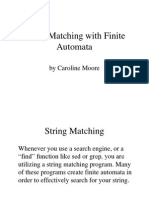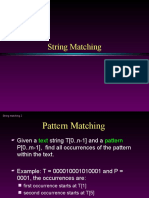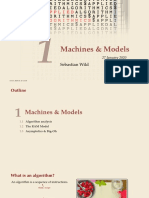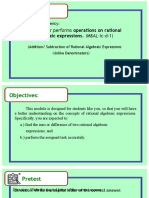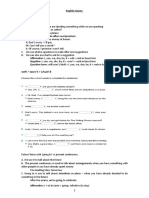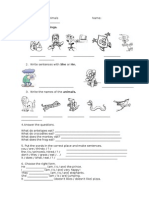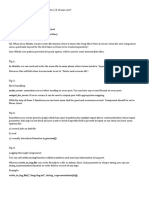0% found this document useful (0 votes)
73 views31 pagesNotes 05 Parallel String Matching
The document discusses parallelizing the string matching problem by dividing it into subproblems that can be solved independently, such as checking guesses in different blocks of the text string simultaneously or using "duels" between guesses based on periodicity witnesses to narrow the search space. It introduces techniques like overlapping blocks, computing periodicity witnesses, and dueling guesses to potentially solve the string matching problem more efficiently in parallel.
Uploaded by
hussein hammoudCopyright
© © All Rights Reserved
We take content rights seriously. If you suspect this is your content, claim it here.
Available Formats
Download as PDF, TXT or read online on Scribd
0% found this document useful (0 votes)
73 views31 pagesNotes 05 Parallel String Matching
The document discusses parallelizing the string matching problem by dividing it into subproblems that can be solved independently, such as checking guesses in different blocks of the text string simultaneously or using "duels" between guesses based on periodicity witnesses to narrow the search space. It introduces techniques like overlapping blocks, computing periodicity witnesses, and dueling guesses to potentially solve the string matching problem more efficiently in parallel.
Uploaded by
hussein hammoudCopyright
© © All Rights Reserved
We take content rights seriously. If you suspect this is your content, claim it here.
Available Formats
Download as PDF, TXT or read online on Scribd
/ 31














